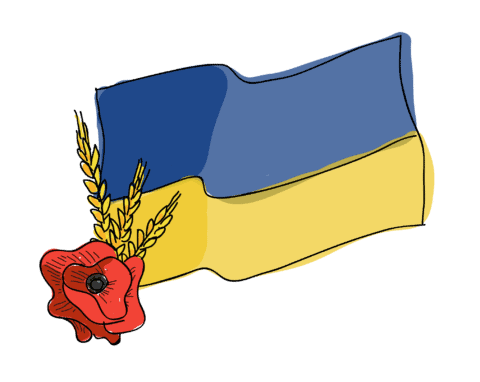In 2008, the Canadian government officially recognized the Ukrainian famine, also known as Holodomor, and designated the fourth Saturday of every November as Ukrainian Famine and Genocide Memorial Day. One student group at the University of Saskatchewan has taken it upon themselves to build knowledge of this genocide with a week of awareness.
From Nov. 20 to 26, the U of S Ukrainian Students’ Association will host their own events for National Holodomor Awareness Week, an initiative created by the Ukrainian Canadian Congress to bring attention to the Holodomor, a deliberate famine designed by the Soviet government under Stalin in 1932 and 1933.
Ukrainian Canadian Congress to bring attention to the Holodomor, a deliberate famine designed by the Soviet government under Stalin in 1932 and 1933.
Ashley Halko-Addley, co-president of the USUSA and fourth-year anthropology major and Ukrainian studies minor, affirms that students should care about Holodomor Awareness Week for both humanitarian and personal reasons.
“[It] is important to commemorate and remember the lives that were pointlessly lost. There are a number of students at the university whose families were directly affected by the Holodomor. It is important for us to remember those whose deaths did not have to and should not have happened,” Halko-Addley said.
The word Holodomor translates to “death by hunger,” signifying the method used to persecute the Ukrainian people in order to force a culture into submission. It is speculated that this human-made famine killed over four million Ukrainians, although the specific number is highly contested because of the lack of records.
During the time of the Holodomor, Ukraine was part of the Union of Soviet Socialist Republics. As a way to quash any Ukrainian nationalist uprising, the Stalin government engineered the famine. This genocide was covered up by the USSR until a British journalist, Gareth Jones, blew the whistle on the operation.
Mykan Zlipko, vice-president internal of the USUSA and fourth-year anthropology major and Ukrainian studies minor, explains the impact of the Holodomor on the Ukrainian diaspora — emigrants who have left Ukraine to settle in other countries.
“This was an event that was covered up in history until pretty much before [the year] 2000, and when the world figured out this happened right underneath its nose, there was a shock factor,” Zlipko said.
In order to remember and raise awareness about the Holodomor, the USUSA has organized two events for the awareness week. The first will be a film screening of The Living on Nov. 22 at 7 p.m. in the Fr. O’Donnell Auditorium, room 140 in St. Thomas More College. The documentary includes testimonies from survivors of the Holodomor and stories from Jones’s diary about the famine in Ukraine.
The second event will be a Candlelight Vigil held on Nov. 24 at 12:30 p.m. in front of the Lesya Ukrainka statue, outside the northwest entrance of the Murray Library. The ceremony will be led by campus minister Father Andre Lalach and will feature speakers from the campus community.
After 84 years, this genocide is still not recognized by some countries, including England, Germany and Russia. The Provincial Government of Saskatchewan was the first provincial government in Canada to officially recognize the famine in May of 2008, with the federal government following this example by only a few weeks.
Although the Soviet government denied that they had any role in the Holodomor, reports show that a considerable amount of grain was in fact being exported out of the Soviet Republic of Ukraine during the famine.
Halko-Addley also explains that everyone, not just people of Ukrainian heritage, should learn about the Holodomor because when people are educated about atrocities in the past, they are less likely to repeat these events.
“I think that it is important for people who aren’t Ukrainian to learn about the Holodomor because it is not just Ukrainian history. It is Soviet history, Russian history, European history and world history. If we don’t learn about and acknowledge this atrocity, then in a few generations it will be forgotten.”
—
Nykole King
Graphic: Lesia Karalash / Graphics Editor